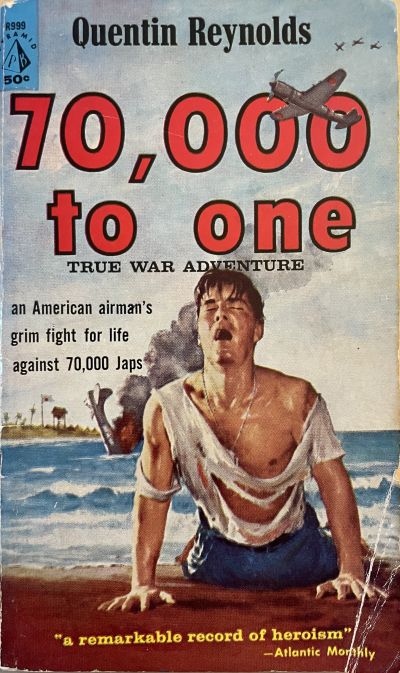American author Quentin Reynolds never hid his admiration of those who courageously withstood or resisted the onslaught of the Axis powers in World War II.
High Point: The story builds to a crescendo as the crash survivor plots and executes his escape from the Japanese army.
Low Point: Reynolds’ use of the first-person perspective lacks the easy flow of his normal third-person narrative.
Author: Quentin Reynolds
Publication Date: 1946
Genre: History
Project Gutenberg: Not available
LibriVox: Not available
Movie/TV Adaptation: None
American author Quentin Reynolds never hid his admiration of those who courageously withstood or resisted the onslaught of the Axis powers in World War II. In London Diary, it was the British people. Dress Rehearsal: The Story of Dieppe, described efforts of the British and Canadian military. In 70,000 to One, it’s a solitary American B-17 bombardier and the locals of Papua New Guinea who assisted his escape from the Japanese army.
The story of Master Sergeant Gordon Manuel is another example of the extraordinary situations in which ordinary citizen soldiers found themselves in the 1940s. In Manuel’s example, the Maine resident’s bomber was shot down over the Pacific. He swam to land, and then ducked the Japanese forces for nine months while gathering data about their gun emplacements. After his rescue, he shared his information with American intelligence officers.
During his time on the run, Manuel had to recover from a fractured ankle, numerous shrapnel wounds, and several bouts of malaria. After the war, he was eventually promoted to Captain in the US Air Force. Sadly, in 1950, he succumbed to illnesses attributed to his nine-month ordeal.
Reynolds chose a rather odd approach to relate Manuel’s experience. Rather than a third-person narrative, Reynolds presented the story as a first-person account from Manuel’s perspective. As a result, he loses the smooth flow exhibited in most of his other works. It’s still an easy read, but seems uneven and clunky at times.
Even if the presentation isn’t the best, the book is still yet another reminder of the unique qualities of Manuel’s generation. If you have interest in the history of the war, especially from the perspective of a single participant, you may enjoy 70,000 to One.



